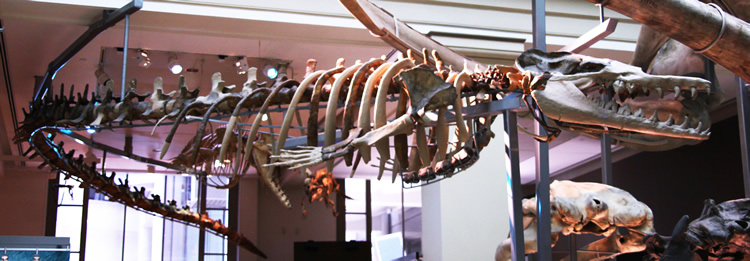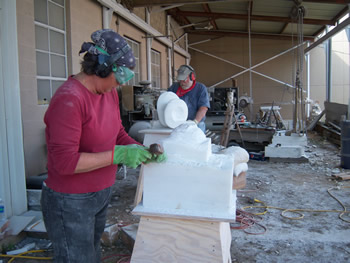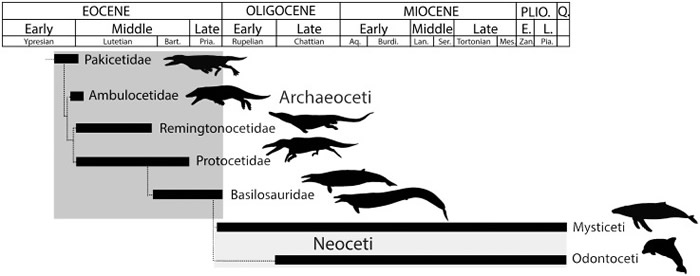Alabama
Type |
Symbol |
Year Est. |
|---|---|---|
State Rock |
Marble |
1969 |
State Mineral |
Hematite |
1967 |
State Gemstone |
Star Blue Quartz |
1990 |
State Fossil |
Basilosaurus cetoides |
1984 |
State Rock: Marble
Act No. 755 H.562 - Smith
An Act
To designate marble as the official rock of the State of Alabama.
Whereas marble, a rock composed primarily of calcium carbonate, is most plentiful in Alabama, being found in the counties of Talladega, Bibb, Calhoun, Clay, Coosa, Etowah, Lee, Macon, St. Clair, and Shelby, and having been quarried in the State since 1840; and,
Whereas one of the most remarkable beds of marble in the world, at least 200 feet thick, occurs near Sylacauga, in Talladega County, being fine-grained and mostly white, of exceptional purity and hardness, taking a beautiful polish, and havig high resistance to abrasion; and,
Whereas buildings throughout this State and the United States have been constructed and ornamented with Alabama marble and this rock has been made a part of some of the nation's most beautiful buildings; and,
Whereas, in addition to its decorative uses, crushes and ground marble is growing in importance as industrial raw material, having application in textiles, paints, electrical insulation, plastics and foods, among others; now, therefore,
Be It Enacted by the Legislature of Alabama:
Section 1. Marble is hereby designated and names the official rock of Alabama.
Section 2. This Act shall become effective immediately upon its passage and approval by Governor, or upon its otherwise becoming a law.
Approved September 12, 1969.

Book covering the history of the Sylacauga marble. (sylacauga.net)
Marble is a metamorphosed variety of the sedimentary rock limestone. This means that the original sedimentary rock underwent periods of increased temperatures and pressures to change the rock itself. The primary minerals in marble are calcite (CaCO3) or dolomite ((Ca,Mg)CO3) but it will usually have other mineral contaminates mixed in as well (i.e., clay, mica, quartz, pyrite, and iron oxide, etc.). Since, the primary mineral in marble is calcite, most marbles will have a white color with swirls of darker colors (the contaminates) but marbles can be found in many different colors depending on what impurities were present in the initial limestone. During metamorphism of the original limestone, the calcite is recrystallized to form interlocking crystals, which will usually destroy any remnants of the original rock, including any fossils present.
Sculpting the Sylacauga Marble during the Magic of Marble Festival in 2010. (sylacauga.net)
The primary source of marble in Alabama is the Sylacauga marble found in Talladega County. The Sylacauga, or Alabama, Marble has been quarried and used in art and building stones throughout Alabama and the US. The marble is named for the town Sylacauga and has been called the "whitest marble in the world" for its purity. The Sylacauga Marble has been used in several famous landmarks including the Washington Monument, the Lincoln Memorial, and the U.S. Supreme Court. The marble formed during metamorphism associated with the Appalachian orogen (mountain building) and is approximately Cambrian to Ordovician in age. Besides the pure white sections of the marble, there are also sections that have green, pink, gray, black, and gold veins in the ~5.5 cubic mile deposit. Official descriptions of the marble state it as "white and pale-blue to light-gray calcite marble, locally containing interlayered dolomite marble and thin phyllite layers" (mrdata.usgs.gov).
Related: Colorado State Rock - Yule Marble; Vermont State Rock #2 - Marble
State Mineral: Hematite
Act No. 503 S. 81 - Vacca, Hawkins, Bailes
An Act
To designate Hematite as the official mineral of the State of Alabama
Whereas, Red Iron Ore, with the scientific name of Hematite, and the chemical formula of Fe2O3, is one of the most valuable and important minerals found in the State of Alabama, and
Whereas, Hematite is used for iron and steel and many industries in this State got their initial start with this important, Alabama-produced mineral, and
Whereas this valuable natural resource has aided the economy of Alabama by contributing to it, since, 1863, 316 million long tons at a value of 850 million dollars.
Be It Enacted by the Legislature of Alabama:
Section 1. Hematite is hereby designated and named the official mineral of the State of Alabama.
Section 2. This Act shall become effective immediately upon its passage and approval by the Governor, or upon its otherwise becoming a law.
Approved September 7, 1967.

Images of red and silver hematite (geology.com).
Hematite is a mineral that is produced from the oxidation of iron, and forms iron oxide in the form of Fe2O3. In everyday language, this means that hematite is more commonly known as rust. Hematite is primarily composed of iron and is abundant on the Earth's surface,resulting in hematite becoming one of our most common sources of iron ore. Although typically found as a red "earthy" deposit, there is also a variety of hematite that has a silver/steel-grey metallic appearance to it (pictured left). Both varieties of hematite can be easily identified by the characteristic bright red streak of the mineral. Hematite has a hardness of 5 to 6, meaning that it is approximately as hard as a plane of glass (5.5). The mineral hematite was originally named "aematitis lithos" in ~300 BCE by the Greek Theophrastus and its name means "blood stone". The name was translated by Pliny the Elder to haematites, meaning "bloodlike", and that name eventually evolved to the modern spelling of "hematite".

Cast iron statue of Vulcan from Birmingham, AL (wikipedia.com).
The hematite in Alabama was primarily mined from the Red Mountain Formation until 1975, where it became cheaper to import it. At one time it was Alabama's most developed, non-fuel, mineral industry, helping to build up Birmingham as an industrial center. In the 135 years hematite was mined, ~375 million tons of ore was excavated. The Red Mountain Formation is primarily a Silurian interbedded shale-sandstone with some siltstone and limestone deposits intermixed. The hematite is largely from cross-bedded sandstone members of the Red Mountain Formation, which were deposited as shoreface (essentially beach) deposits. The production of hematite within the sandstone was precipitated during periods of sediment starvation and reworking during a regression (sea-level drop). Birmingham is also known for the largest cast-iron structure ever made, the statue of Vulcan (picture right), produced entirely with the Birmingham iron ore.
State Gemstone: Star Blue Quartz
Act No. 90-203 S.J.R. 7 - Senator Hale
Senate Joint Resolution
Designating the Star Blue Quartz as the official gemstone for the State of Alabama.
Be it resolved by the Legislature of Alabama, both houses thereof concurring, that the Star Blue Quartz be designated as the official gemstone for the State of Alabama.
Approved March 29, 1990

Star blue quartz (Alabama.gov).
Quartz is one of the most common minerals on Earth, primarily due to its simple structure and chemical formula, SiO2. Quartz also has an extremely high hardness, 7 on Mohs hardness scale, meaning that it doesn't scratch very easily and therefore does not break down easily. As the rocks on Earth are slowly eroded over time, most of the other minerals will break down into clay while quartz grains will generally just gets smaller and smaller. The result is that most beach sand is composed of quartz that has a slight hematite (rust) stain to it to give the sand grains their slight yellowish color. Although quartz is a simple mineral, it can come in a variety of colors depending on what type of impurities are present in the crystal structure; pure quartz crystal is clear, milky quartz is white, smoky quartz is grey, amethyst is purple quartz, citrine is yellow quartz, rose quartz is pink, as well as some other colors and varieties. Quartz does not have any cleavage, meaning that when it breaks it doesn't form along perfect surfaces. Instead as the quartz crystals grow, individual mineral molecules of quartz are added to the outside of the crystal from water rich in dissolved SiO2 or mineral melt (liquid rock like lava or magma).
Unlike the other varieties of quartz (such as citrine or amethyst), pure blue quartz has not yet been found in nature. Instead, the quartz crystals appear blue because of the inclusions of other minerals or properties of the mineral itself that make the light reflect through the mineral and makes it appear blue. The reason that Star Blue Quartz is blue is that it contains little bits of amphibole (another type of mineral) and displays asterism (a star pattern in the light) when polished. The problem with this variety of quartz though is that there is little to no information on where to find it or why it was even listed as the state gemstone. The best that I can find is the constantly rehashed phrase from when it was promoted to the state: "(star blue quartz) is one of the most beautiful gemstones on earth, and the cheapest because there are so many." It appears that this very common mineral is rare to non-existent in Alabama. There have been reports of it along the Flint River, but most of those occurrences are generally in neighboring Georgia.
Related: Arkansas State Mineral - Quartz Crystal; Georgia State Gemstone - Quartz; New Hampshire State Gem - Smokey Quartz; South Carolina State Gem Stone - Amethyst; South Dakota State Mineral Stone - Rose Quartz
State Fossil: Basilosaurus cetoides
Act No. 84-66 H.J.R. 78 - Rep. Onderdonk
House Joint Resolution
Designating "Species Basilosaurus cetoides," the ancient whale fossil as the official Alabama fossil.
Whereas, the Alabama Legislature notes that the ancient whale "Species Basilosaurus Cetoides," (sic) named after the forty million year old whale fossil was discovered in Washington County, Alabama; and
Whereas, this ancient whale fossil is most abundant in the State of Alabama, and two of the most comprehensive skeletons of the "Species Basilosaurus Cetoides" (sic) were discovered in Alabama, on discovered by Mr. Ronald "Bones" Rhoads and now located in the Red Mountain Museum, Birmingham, Alabama, and the second, a fifty-five foot skeletal exhibit is on display in the Smithsonian Institute, Washington, D.C.; and
Whereas, the Alabama Legislature feels it is most appropriate that the interest in and the study of this ancient aquatic mammal predator, with serrated posterior molars, be encouraged and perpetuated for scientific and historical reasons; now therefore,
Be it resolved by the Alabama Legislature, both houses thereof concurring, That the Alabama Legislature does hereby designate as the official State of Alabama Fossil the "Species Basilosaurus Cetoides." (sic)
Resolved further, That no fossil "Species Basilosaurus Cetoides" (sic) shall be removed from the State of Alabama, in whole or in part, except by prior written approval of the Governor.
Be it further resolved, That copies of this resolution shall be sent to the Washington County governing body, the Director of the Department of Archives and History, the governor and to the red Mountain Museum, Birmingham, Alabama, for appropriate display.
Approved March 13, 1084

Basilosaurus skeleton from the National Museum of Natural History (Wikimedia.org).
Basilosaurus is a member of the whale family (Cetacea) first discovered in Alabama in 1834. It was originally thought to be a swimming reptile but was later discovered that it was indeed a whale from the Eocene period (40-35 million years ago). Unlike modern day whales, Basilosaurus still retained its hind limbs. These were thought to be mostly nonfunctional, however there is a theory that they could have been used during sex. Basilosaurus is one of the closest related animals to modern day cetaceans (dolphins, whales, etc.) that still retains their hind-limbs, although the pelvis is not connected to the vertebrae, limiting any function that it could provide.
The group Basilosauridae contained a few other species that had body proportions similar to modern day dolphins but Basilosaurus had an "exceptionally long body and tail" resulting in the animal having a more snake-like appearance. The body length ranged from 49 to 59 ft and is one of the largest known animals during the Paleocene-Eocene time period. Basilosaurus is most abundant in Alabama and has been found in Clarke, Choctaw, and Washington counties.
Related: Vermont State Marine Fossil - Beluga Whale Skeleton
References
https://statesymbolsusa.org/states/united-states/alabama
http://www.sylacauga.net/library/sections/Sylacauga%20Marble%20Fiestival/Marble%20Fiestival%202010.htm
http://en.wikipedia.org/wiki/Vulcan_statue
http://geology.about.com/od/regional_geology/ig/stategems/stateblueqtz.htm
http://www.encyclopediaofalabama.org/face/Multimedia.jsp?id=m-3931
http://legacy.decaturdaily.com/decaturdaily/news/050206/marble.shtml
https://mrdata.usgs.gov/geology/state/sgmc-unit.php?unit=ALsgq%3B7
http://geology.com/rocks/marble.shtml
https://www.mindat.org/min-1856.html
https://geology.com/minerals/hematite.shtml
https://mrdata.usgs.gov/geology/state/sgmc-unit.php?unit=ALSrm%3B3
https://en.wikipedia.org/wiki/Basilosaurus
https://archive.org/details/alabama-acts-1969_1970_v2/page/n389/mode/2up
https://archive.org/details/alabama-acts?sort=date&&and[]=year%3A%221967%22
https://archive.org/details/alabama-acts?sort=date&&and[]=year%3A%221969%22
https://archive.org/details/alabama-acts?sort=date&&and[]=year%3A%221984%22
https://archive.org/details/alabama-acts?sort=date&&and[]=year%3A%221990%22
Geology of Alabama's National Parks
Through Pictures
(at least the one's I have been to)
Russell Cave National Monument
Russell Cave National Monument
Visited in 2018
During a trip to Chattanooga for my wife's Ironman race, we took a tour of some of the nearby National Parks. This included a brief foray into Alabama to see the small, but cool Russell Cave.
.jpg)
Entrance Sign
.jpg)
Within the museum and visitor's center there are several panels of artifacts explaining about the Native People who used to live in the caves and how geology was related to their lives. Here the first farmers are mentioned who used nearby flint (a silica/quartz based rock that is very hard and can be broken to have very thin and sharp edges) and limestone (the rock the caves were formed within) as materials to make tools.
.jpg)
More use of geology, this time for of weapons and more tools. These were also used from nearby flint deposits.
.jpg)
Here are the remains of many of the animals found within the caves that the Native People used for food.
.jpg)
Here is the main mouth of Russell Cave as you walk up to it from the trail. The entrance has a very large cave mouth and was primarily the place where the Native People resided. Despite Russell Cave being the 19th longest cave in the US, most to nearly all of the activity was at the mouth.
.jpg)
Here is another shot of the cave right before going in.
.jpg)
View from the edge of the cave. Most caves are formed by the dissolution of limestone from running water. In this instance the creek is visible in the previous photo which caused the dissolution. The limestone here can be broken up into three different rock units: the Monteagle Limestone, the Bangor Limestone, and the Pennington Formation. All of these units are Mississippian in age (over 300 million years old). The overlying rock is a sandstone. The overlying rock is a very important part of cave formation because without a sturdy roof rock that resists fracturing, the dissolution of the cave would just cause the entire ground to collapse and no cave could be form. The sandstone is younger than the limestone (hence it being on top) and is Pennsylvanian in age and called the Pottsville Formation (npshistory.com)
.jpg)
This sign within the cave explains that cave roof collapses made it possible for people to live within the cave, causing the floor of the cave to rise above flood waters. The cave was inhabited from about 11,000 years ago to 9,000 years ago.
.jpg)
A couple of hundred feet away from the main entrance is this sinkhole that you can see within the forested area. Here the cave roof, the sandstone, was not strong enough to hold itself up over the dissolved rock and collapsed into the hole below.
.jpg)
Now this is an interesting rock that was just outside the visitor's center. The park service people placed it here on purpose right near a sign explaining it. It is a rock filled with these features called septarian concretions. Concretions are blocks of rock that form from the continued precipitation of minerals along the outer surface of the rock. They often form from hard minerals in softer rocks (such as calcite in a shale) and then when the softer rocks erode away, it leaves behind the concretion. Septarian concretions form in a similar manner, except that they have periods of contractions and expansions which produced cracks or stress fractures within the concretions themselves. These fractures will also fill with the precipitated minerals, producing these banded concretions of different minerals. As these minerals erode, they will erode at different rates all in relation to the hardness of the mineral being eroded producing this onion effect in the rock.





